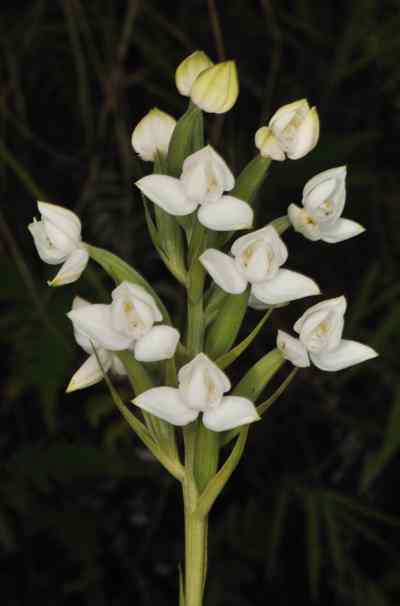Terrestrial. Whole plant about 30 to 65 cm in height. Lower part of stem sheathed, middle leafy and upper part bracteate. Leaves 4 to 6 cm long, oblong to elliptic, 5 nerved, the base of the leaf narrowed into a long tubular sheath. Spike 4 to 7 cm long, laxly flowered. Sepals sub-equal, broadly ovate, acute, spreading, the lateral pair sub-erect. Petals narrowly oblong, sub-acute, curved inwards, shorter than the sepals. Lip as long as the sepals, lanceolate, always curved upwards. Spur totally absent. Stigmas united.

The Pursuit
As this species is a look alike of Habenaria dentata var. dentata, it was very difficult to distinguish them without flowers. Repeatedly visited the area, every other day, trekking around 12 km. In the end, spurless buds came confirming it as Habenaria malintana, (Blanco) Merr. Then came the obstacle in the form of a land slide which brought the vehicular movement in that region to a standstill. Took the help of villagers in finding an alternative route across the river, using bamboos, ropes etc. Frequenting to there every other day became a huge hazard and decided to camp there for the bloom. This time the buds behaved nicely, they bloomed much before than expected and got the photographs of the species in bloom for the first time from the region.

